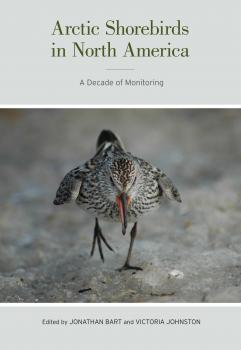Studies in Avian Biology
Скачать книги из серии Studies in Avian BiologyEmerging Avian Disease
In this volume, new human disease pandemics, arising from animals stimulated by ongoing environmental change, demonstrate the value of ornithological research into avian diseases. A group of 29 researchers addresses a diverse set of topics, including the evolutionary and ecological aspects of the host-vector systems, the effects of genetic variation, introduction success and vector ecology, evolution of resistance and virulence of pathogens, and the effects of changing geographic distributions. In addition to empirical studies under field conditions, the authors present predictive models to assess the movement and potential impact of these diseases. Other chapters delve into the potential impacts of pathogens and the key role of biosurveillance and documenting impacts of disease on bird populations.
Video Surveillance of Nesting Birds
Declining bird populations, especially those that breed in North American grasslands, have stimulated extensive research on factors that affect nest failure and reduced reproductive success. Until now, this research has been hampered by the difficulties inherent in observing nest activities. <i>Video Surveillance of Nesting Birds</i> highlights the use of miniature video cameras and recording equipment yielding new important and some unanticipated insights into breeding bird biology, including previously undocumented observations of hatching, incubation, fledging, diurnal and nocturnal activity patterns, predator identification, predator-prey interactions, and cause-specific rates of nest loss. This seminal contribution to bird reproductive biology uses tools capable of generating astonishing results with the potential for fresh insights into bird conservation, management, and theory.
Boreal Birds of North America
Reaching from interior Alaska across Canada to Labrador and Newfoundland, North America’s boreal forest is the largest wilderness area left on the planet. It is critical habitat for billions of birds; more than 300 species regularly breed there. After the breeding season, many boreal birds migrate to seasonal habitats across the United States, Mexico, the Caribbean, and Central and South America. This volume brings together new research on boreal bird biology and conservation. It highlights the importance of the region to the global avifauna and to the connectivity between the boreal forest and ecoregions throughout the Americas. The contributions showcase a unique set of perspectives on the migration, wintering ecology, and conservation of bird communities that are tied to the boreal forest in ways that may not have been previously considered.
Ecology, Conservation, and Management of Grouse
Grouse—an ecologically important group of birds that include capercaillie, prairie chickens, and ptarmigan—are distributed throughout the forests, grasslands, and tundra of Europe, Asia, and North America. Today, many grouse populations are in decline, and the conservation and management of these charismatic birds is becoming a global concern. This volume summarizes current knowledge of grouse biology in 25 chapters contributed by 80 researchers from field studies around the world. Organized in four sections—Spatial Ecology, Habitat Relationships, Population Biology, and Conservation and Management—the chapters offer important insights into spatial requirements, movements, and demography of grouse. Much of the research employs emerging tools in ecology that span biogeochemistry, molecular genetics, endocrinology, radio-telemetry, and remote sensing. The chapters explore topics including the impacts of climate change, energy development, and harvest, and give new evidence for life-history changes in response to human activities.
Population Demography of Northern Spotted Owls
The Northern Spotted Owl, a threatened species that occurs in coniferous forests in the western United States, has become a well-known environmental symbol. But how is the owl actually faring? This book contains the results of a long-term effort by a large group of leading researchers to document population trends of the Northern Spotted Owl. The study was conducted on 11 areas in the Pacific Northwest from 1985 to 2008, and its objectives were both to evaluate population trends and to assess relationships between reproductive rates and recruitment of owls and covariates such as weather, habitat, and the invasion of a closely related species, the Barred Owl. Among other findings, the study shows that fecundity was declining in five populations, stable in three, and increasing in three areas. Annual apparent survival rates of adults were declining in 10 out of 11 areas. This broad, synthetic work provides the most complete and up-to-date picture of the population status of this inconspicuous forest owl, which is at the center of the complex and often volatile debate regarding the management of forest lands in the western United States.<BR /><BR /> Researchers:<BR /> Steven H. Ackers<BR /> Lawrence S. Andrews<BR /> David R. Anderson<BR /> Robert G. Anthony<BR /> Brian L. Biswell<BR /> Kenneth P. Burnham<BR /> Peter C. Carlson<BR /> Raymond J. Davis<BR /> Lowell V. Diller<BR /> Katie M. Dugger<BR /> Eric D. Forsman<BR /> Alan B. Franklin<BR /> Elizabeth M. Glenn<BR /> Scott A. Gremel<BR /> Dale R. Herter<BR /> J. Mark Higley<BR /> James E. Hines<BR /> Robert B. Horn<BR /> Joseph B. Lint<BR /> James D. Nichols<BR /> Janice A. Reid<BR /> James P. Schaberl<BR /> Carl J. Schwarz<BR /> Thomas J. Snetsinger<BR /> Stan G. Sovern<BR /> Gary C. White
Greater Sage-Grouse
Admired for its elaborate breeding displays and treasured as a game bird, the Greater Sage-Grouse is a charismatic symbol of the broad open spaces in western North America. Unfortunately these birds have declined across much of their range—which stretches across 11 western states and reaches into Canada—mostly due to loss of critical sagebrush habitat. Today the Greater Sage-Grouse is at the center of a complex conservation challenge. This multifaceted volume, an important foundation for developing conservation strategies and actions, provides a comprehensive synthesis of scientific information on the biology and ecology of the Greater Sage-Grouse. Bringing together the experience of thirty-eight researchers, it describes the bird’s population trends, its sagebrush habitat, and potential limitations to conservation, including the effects of rangeland fire, climate change, invasive plants, disease, and land uses such as energy development, grazing, and agriculture.







